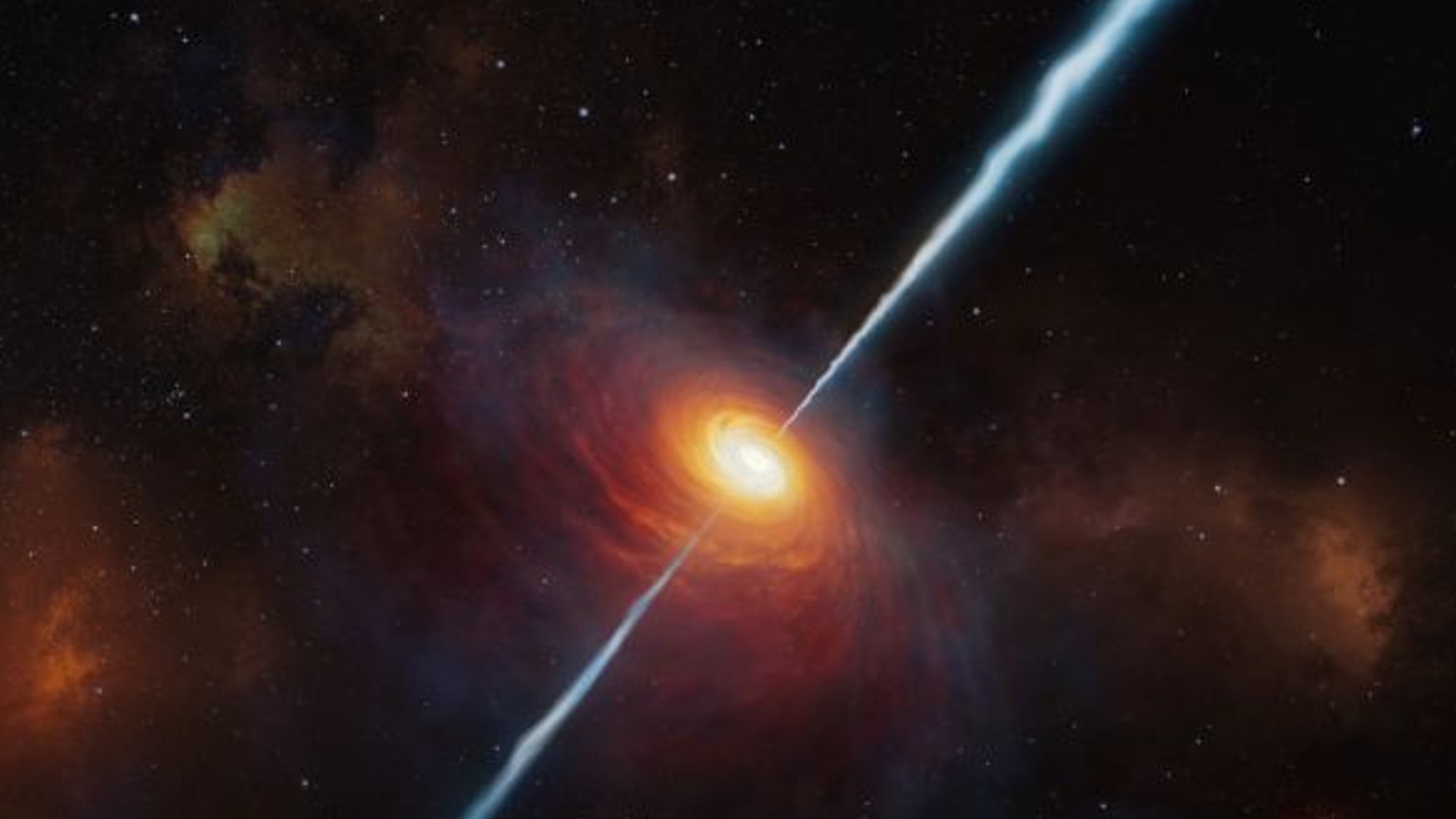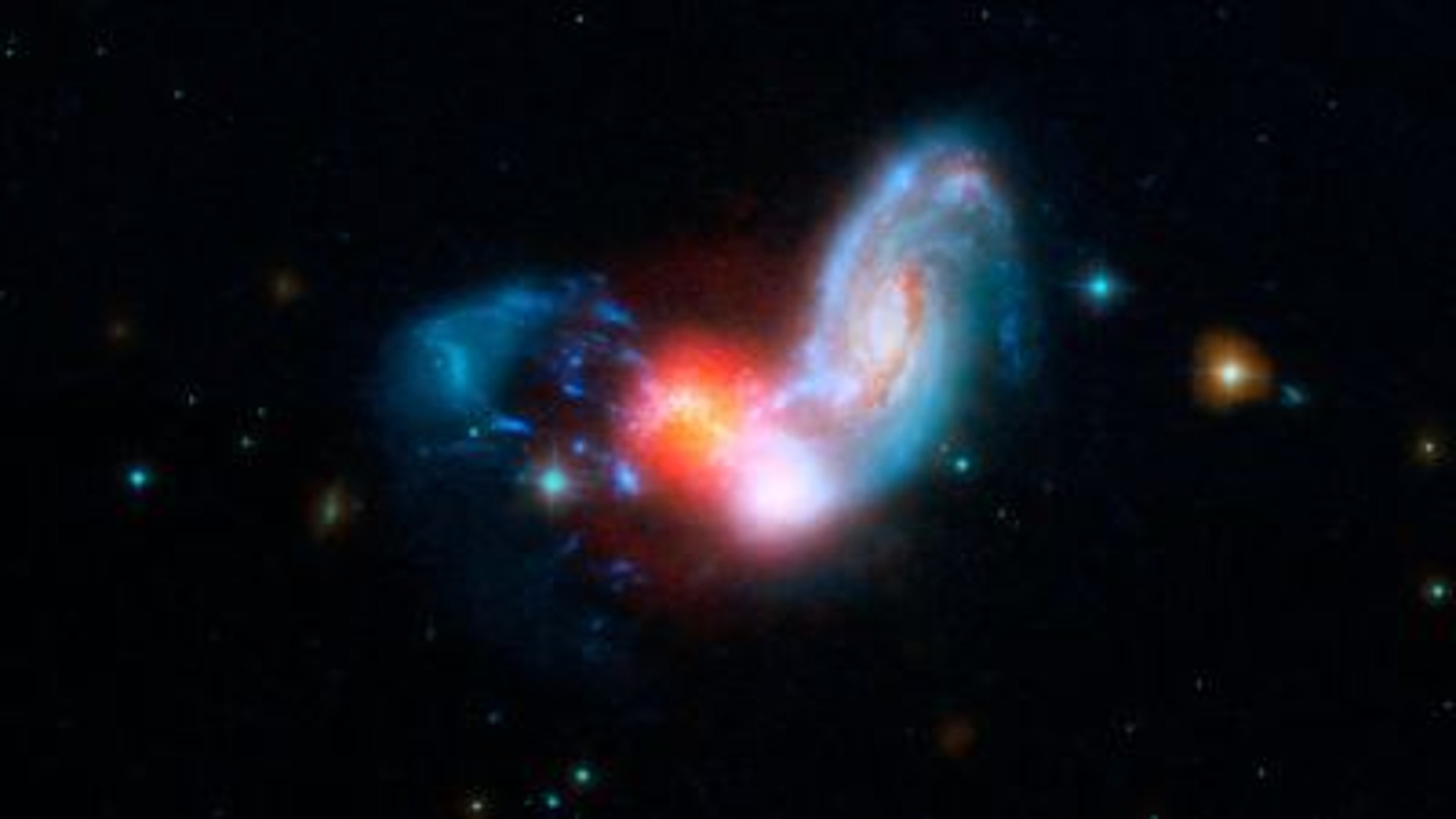
Scientists may have solved a 60-year-old mystery by discovering that quasars — energetic objects that are powered by ravenous supermassive black holes and can outshine trillions of stars combined — form when galaxies collide and merge.
The findings indicate that the Milky Way could host a quasar of its own when it collides with the neighboring Andromeda galaxy several billion years from now.
Scientists have previously tracked quasars' bright, energetic emissions to regions at the hearts of galaxies that span roughly the width of the solar system — meaning quasars must come from incredibly compact objects. The leading theory suggests that quasars are supermassive black holes heating huge amounts of surrounding gas, thus releasing tremendous amounts of radiation before the material falls onto the black hole's surface.
Since their discovery six decades ago, quasars have puzzled scientists — mainly because it's unclear just how supermassive black holes can draw in enough raw material to fuel such powerful emissions. While supermassive black holes dwell at the centers of most galaxies, the gas needed to fuel quasars tends to orbit on the outskirts of galaxies. Thus, there must be some delivery service moving gas toward the hearts of galaxies.
Now, new research published in the journal Monthly Notices of the Royal Astronomical Society uses deep imaging observations from the Isaac Newton Telescope in Spain's Canary Islands to finally solve this puzzle.
"To understand how quasars are ignited we need to determine how gas can fall into the center of the host galaxies at sufficiently high rates," lead study author Clive Tadhunter, a professor in the Department of Physics and Astronomy at the University of Sheffield in the U.K., told Live Science via email. "One idea is that the necessary radial infall is caused by collisions between galaxies, whose associated gravitational forces can perturb the gas from its usual circular orbits."

When comparing 48 nearby galaxies hosting quasars to 100 non-quasar galaxies, the researchers discovered the presence of distorted structures at the edges of the quasar-hosting galaxies. These structures also indicate a past or ongoing collision and merger with another galaxy, Tadhunter said.
"We found a high rate of such structures in quasar-hosting galaxies, three times that measured for a carefully matched control sample of non-quasar galaxies that were imaged with the same techniques," Tadhunter said. "This provides strong evidence that quasars are indeed triggered in galaxy collisions."
The team's research isn't the first time galactic mergers have been linked to quasars. Tadhunter pointed out, however, that attempts to test this hypothesis by hunting for distorted structures at the outer parts of galaxies that are characteristic of such collisions had previously proved ambiguous.
"Some studies have found the expected structures but others have not," he continued. "We believe that much of the past ambiguity in this field is due to the fact that many of the previous imaging studies did not have sufficient depth to detect the sometimes faint distorted structures in the outer parts of the galaxies that host the quasars."
Quasars can have a large influence on the evolution of galaxies that host them; better understanding how quasars ignite could help scientists hone their models of galaxy evolution and the evolution of the universe as a whole.
"It's important to understand how, when, and where quasars are triggered, as once triggered, the enormous radiative power generated by a quasar can have a major, damaging effect on the surrounding host galaxy," Tadhunter said. "For example, the pressure of the radiation can expel the remaining gas in the remnant galaxy system. Since gas is required to form new stars, this will cut off any future star formation activity, effectively the death throes of the galaxy."
Tadhunter also pointed out that understanding the connection between galactic collisions and quasars is vital in determining the future of our own corner of the cosmos.
"The nearest large galaxy — the Andromeda Spiral — is coming directly towards us at a high velocity, and will collide and merge with the Milky Way in around 5 billion years," he said. "When this happens, it's likely that a quasar will be triggered as gas falls into the center of the remnant system."
The team intends to follow up on this research by examining other quasars that are at a wider range of distances and that have been detected using other methods, to see if they have the same features that connect them to galactic collisions.
This story was provided by Live Science.







